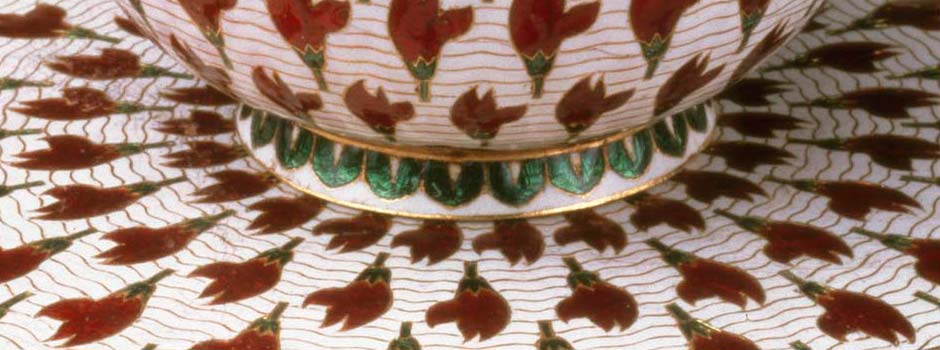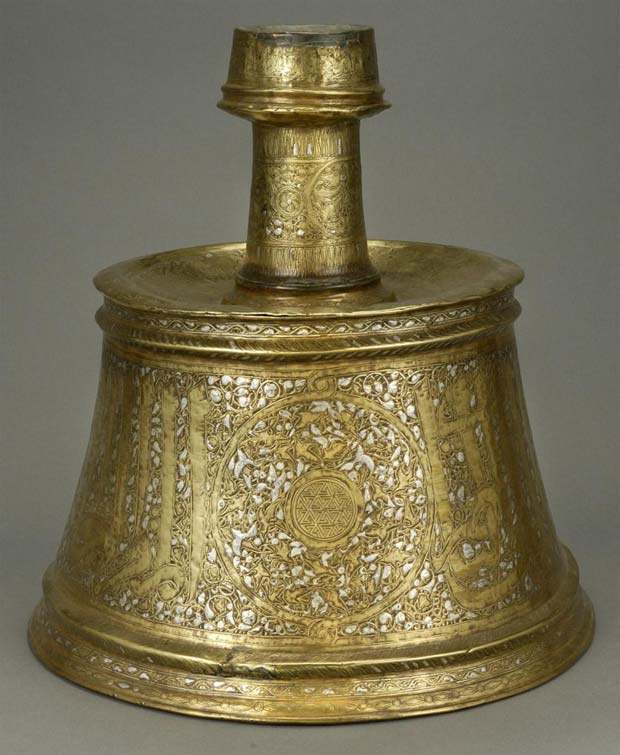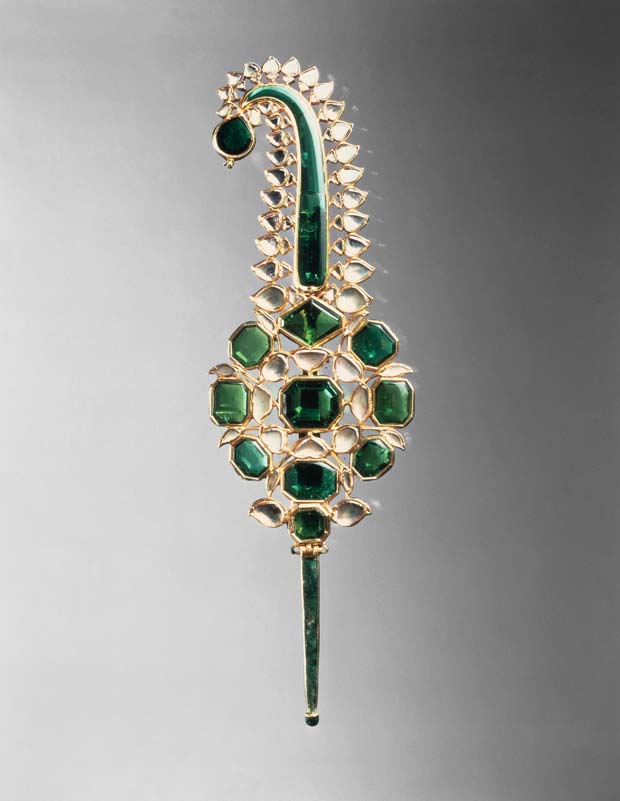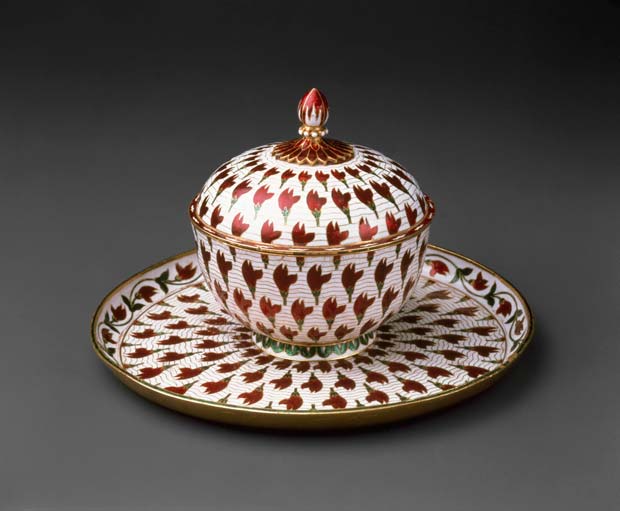
Sixty examples of Islamic masterworks from the renowned collection will be on loan in Houston A Historic Agreement between The Museum of Fine Arts, Houston and The al-Sabah Collection
Nov 06, 2012 Art Collection

The privately held al-Sabah Collection, one of the greatest collections of Islamic art in the world, will place some 60 objects, ranging from carpets, ceilings and architectural fragments to exquisite ceramics, metalwork, jewelry, scientific instruments and manuscripts, on long-term loan in a dedicated gallery at the MFAH. The Museum will reciprocate with staff exchanges and training and, at a future date, exchange of works of art and exhibitions. The initial term of the renewable agreement is five years, and the first display is expected to be on view for at least one year, beginning January 26, 2013.
 Candlestick, Egypt, 14th century, brass inlaid with silver; 14 1/8 x 13 15/16 x 13 15/16 in. (35.8 x 35.4 x 35.4 cm); The al-Sabah Collection, Dar al-Athar al-Islamiyyah, Kuwait
Candlestick, Egypt, 14th century, brass inlaid with silver; 14 1/8 x 13 15/16 x 13 15/16 in. (35.8 x 35.4 x 35.4 cm); The al-Sabah Collection, Dar al-Athar al-Islamiyyah, Kuwait
This display, which contains objects from the 8th to the 18th centuries, made in the Iberian Peninsula, North Africa, the Middle East and Central Asia, will demonstrate the development of new aesthetics in Islamic visual culture, based on calligraphy, geometric ornamentation and the arabesque. The primacy of the written word, exemplified by early illuminated manuscripts of the Qur’an in Kufic script, will be seen in ceramics, stone capitals, textiles and inlaid metal work. Intricate geometric ornamentation decorates a 15th-century Spanish ceiling panel; a Mamluk rug made in Egypt; manuscripts and works on paper; and glass and metal vessels. Arabesque decoration, derived from scrolling vines and other vegetal motifs, will be seen on 17th-century Ottoman textiles, Iznik pottery and tiles from Persia and Central Asia. Finally, selections of Mughal paintings, illuminated manuscripts and ceramics made in north India and Iran in the 17th century, as well as examples of spectacular Mughal jewelry, will complete the display.
 Turban ornament, India, second half 17th century, fabricated in gold with champlevé and over-painted enamels set with emeralds and diamonds; 6 13/16 x 2 1/16 x ½ in. (17.3 x 5.3 x 1.3 cm); The al-Sabah Collection, Dar al-Athar al-Islamiyyah, Kuwait
Turban ornament, India, second half 17th century, fabricated in gold with champlevé and over-painted enamels set with emeralds and diamonds; 6 13/16 x 2 1/16 x ½ in. (17.3 x 5.3 x 1.3 cm); The al-Sabah Collection, Dar al-Athar al-Islamiyyah, Kuwait
The al-Sabah Collection is widely recognized as the greatest holding of Mughal jewelry in the world. The loans to Houston include an engraved emerald weighing more than 85 carats, a very important inscribed spinel (ruby), an emerald-and-diamond turban ornament, enamel vessels and jeweled jade court daggers. These jewels were previously seen in Houston in 2002 at the MFAH in the exhibition Treasury of the World: Jewelled Arts of India in the Age of the Mughals (TOW), drawn exclusively from The al-Sabah Collection.
The agreement was negotiated by the two directors with the assistance of Mahrukh Tarapor, senior advisor for international initiatives for the MFAH. The initial selection of objects was proposed by Giovanni Curatola, professor at the University of Udine and a consultant for the DAI, who will assist the MFAH with the presentation in Houston. The Museum will honor Sheikha Hussah al-Sabah at its Arts of the Islamic World Gala on January 25, 2013.
“I am thrilled that the legendary al-Sabah Collection has decided to place masterworks from these extraordinary holdings on display in Houston,†said Tinterow. “With one stroke, we will be able to show our public the glorious achievement of Islamic visual culture in a comprehensive display, perhaps the finest between the East and West coasts of the United States. Houston is home to a large and diverse Muslim community, and I am very happy that the art and culture of the Islamic world will now take its rightful place in the Museum.â€
“In many ways, this new cooperation is a continuation of the relationships with a city that began decades ago, and with the Museum of Fine Arts, Houston which began in 2002,†noted Sheikha Hussah al-Sabah. “It was a son of Houston, the Honorable George H.W. Bush, who spearheaded the UN coalition that liberated Kuwait from Iraq in 1991. It is the hospitality of Houston that encourages the Muslim community to be part of the city and share their culture, in part through this exhibition. And, of course, it was the exceptional experience we enjoyed while working with the museum on the Treasury of the World: Jewelled Arts of India in the Age of the Mughals (TOW) exhibition that made the decision easy. Houston and Kuwait share much more than a common interest in oil production; there is also a common interest in learning from and about other cultures. We are proud that, together, the MFAH and the DAI will give all the people of Houston a new opportunity for sharing.â€
 Lidded cup and saucer, India, c. mid-17th century, fabricated from gold with champlevé and painted enamels; height of assembled elements 3 ½ in (8.2 cm), diameter of saucer 5 1/16 in. (13 cm); The al-Sabah Collection, Dar al-Athar al-Islamiyyah, Kuwait
Lidded cup and saucer, India, c. mid-17th century, fabricated from gold with champlevé and painted enamels; height of assembled elements 3 ½ in (8.2 cm), diameter of saucer 5 1/16 in. (13 cm); The al-Sabah Collection, Dar al-Athar al-Islamiyyah, Kuwait
Dar al-Athar al-Islamiyyah (DAI) is a cultural organization based on the Kuwaiti private art collection of Sheikh Nasser Sabah al-Ahmed al-Sabah, founder of The al-Sabah Collection, and his wife, DAI director general and co-founder Sheikha Hussah Sabah al-Salem al-Sabah. The collection preserves and presents all aspects of Islamic art and includes more than 30,000 pieces extending from Spain to China, from the 1st to 13th centuries AH (7th to 19th centuries AD). Established in 1983, DAI was created to manage The al-Sabah Collection permanent loan to the State of Kuwait, under the auspices of the National Council for Culture, Arts, and Letters. Since its inception, DAI has grown from a single focus organization to an internationally recognized cultural organization. In addition to a highly specialized library that includes rare books, DAI is also involved in the publication of scholarly books on Islamic art and culture. Finally, while the rehabilitation project of DAI’s buildings at the Kuwait National Museum is under way, the Amricani Cultural Centre is the temporary home of DAI. The Amricani Cultural Centre is the setting for most of the organization’s activities and events, including local temporary exhibitions and DAI’s cultural season events.
Established in 1900, the MFAH is the oldest art museum in the region, with collections spanning antiquity to the present. The MFAH main campus comprises the Audrey Jones Beck Building, designed by Rafael Moneo and opened in 2000; the Caroline Wiess Law Building, designed by Mies van der Rohe and opened in 1958, with an extension completed in 1974; and the Lillie and Hugh Roy Cullen Sculpture Garden, designed by Isamu Noguchi and opened in 1986. The Beck and Law buildings are connected by the Wilson Tunnel, which features James Turrell’s iconic installation The Light Inside (1999). Additional spaces include a repertory cinema, two libraries, public archives and a conservation and storage facility. Nearby, two house museums—Bayou Bend Collection and Gardens and Rienzi—present American and European decorative arts. The MFAH is also home to the Glassell School of Art and its acclaimed Core post-graduate residency program and Junior and Studio Schools; and the International Center for the Arts of the Americas (ICAA), a leading research institute for 20th-century Latin American and Latino art.
Comments
Add a comment